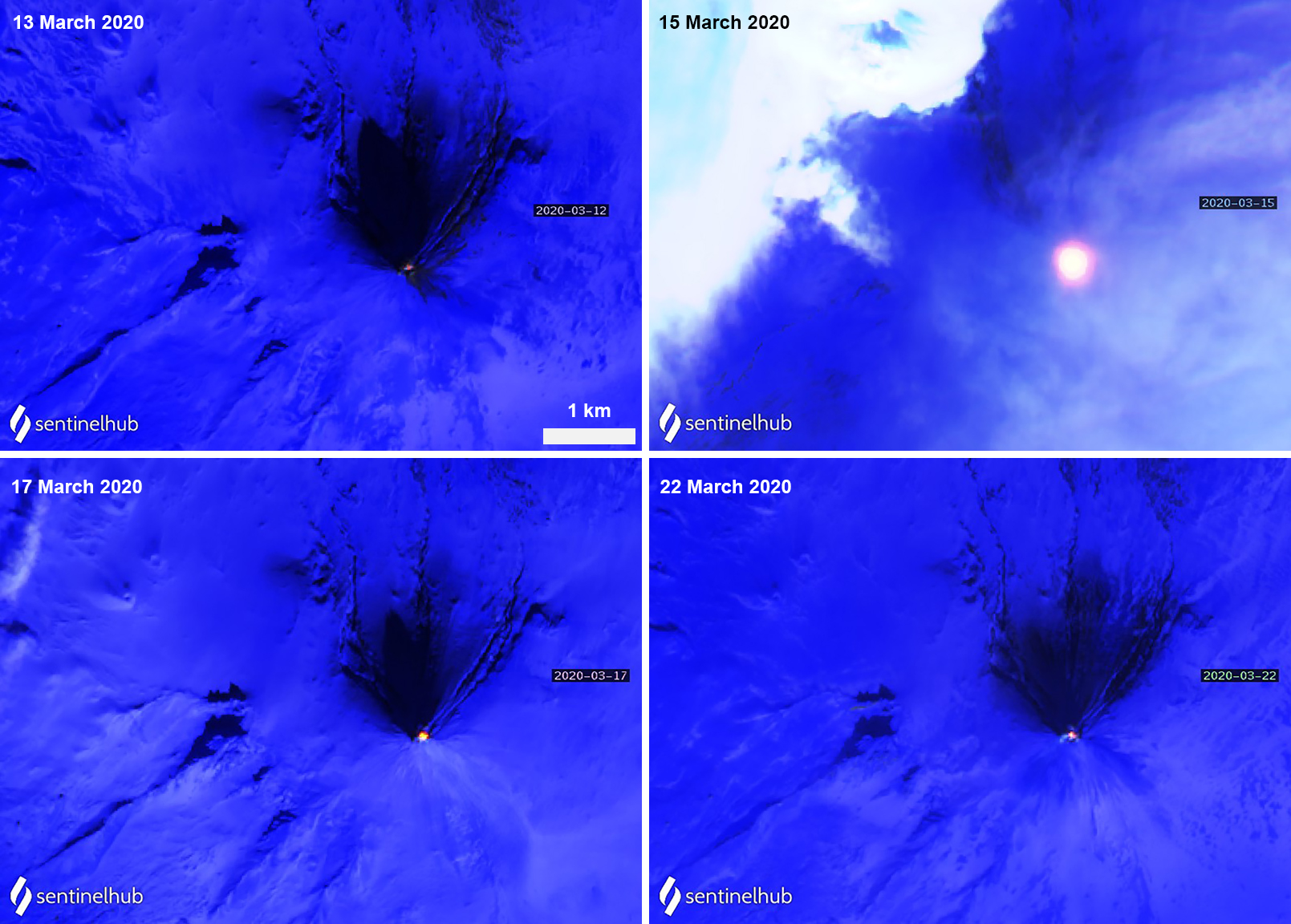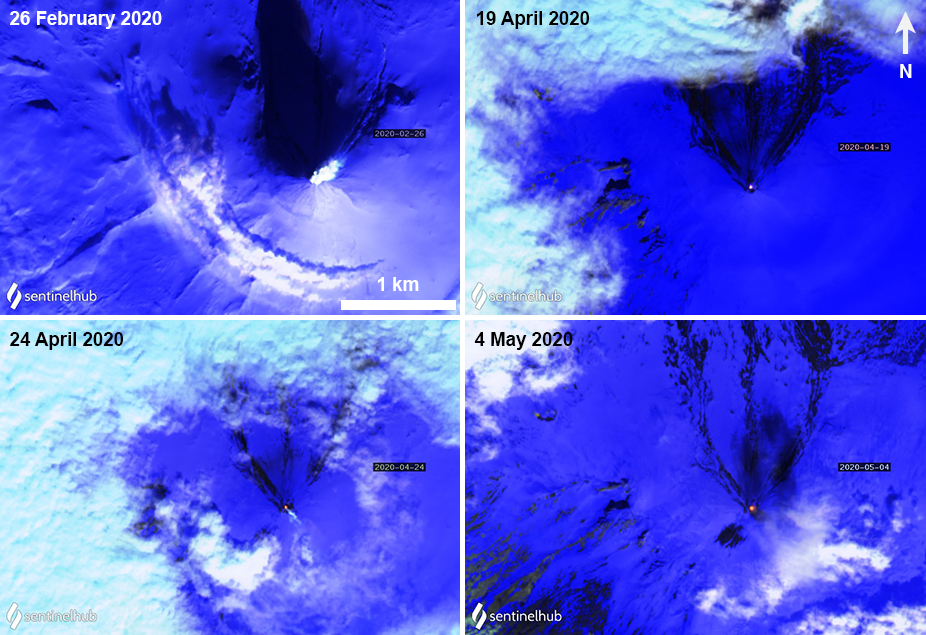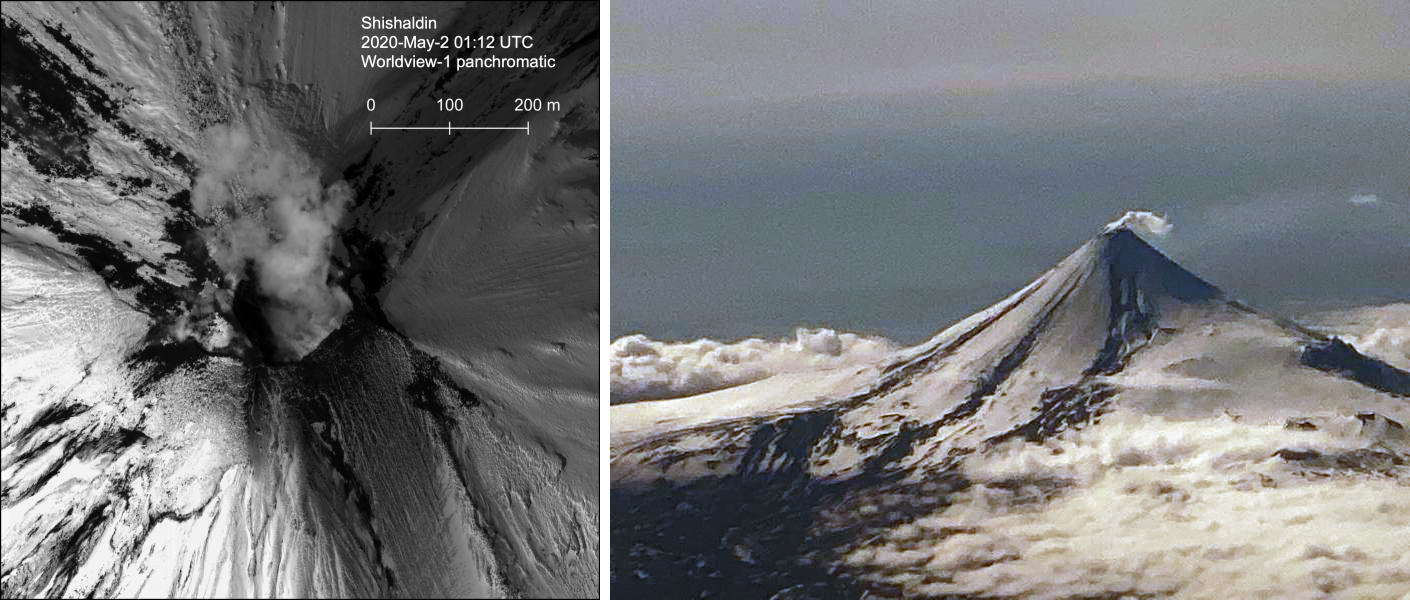Report on Shishaldin (United States) — June 2020
Bulletin of the Global Volcanism Network, vol. 45, no. 6 (June 2020)
Managing Editor: Edward Venzke.
Edited by Kadie L. Bennis.
Shishaldin (United States) Intermittent thermal activity and a possible new cone at the summit crater during February-May 2020
Please cite this report as:
Global Volcanism Program, 2020. Report on Shishaldin (United States) (Bennis, K.L., and Venzke, E., eds.). Bulletin of the Global Volcanism Network, 45:6. Smithsonian Institution. https://doi.org/10.5479/si.GVP.BGVN202006-311360
Shishaldin
United States
54.756°N, 163.97°W; summit elev. 2857 m
All times are local (unless otherwise noted)
Shishaldin is located near the center of Unimak Island in Alaska, with the current eruption phase beginning in July 2019 and characterized by ash plumes, lava flows, lava fountaining, pyroclastic flows, and lahars. More recently, in late 2019 and into January 2020, activity consisted of multiple lava flows, pyroclastic flows, lahars, and ashfall events (BGVN 45:02). This report summarizes activity from February through May 2020, including gas-and-steam emissions, brief thermal activity in mid-March, and a possible new cone within the summit crater. The primary source of information comes from the Alaska Volcano Observatory (AVO) reports and various satellite data.
Volcanism during February 2020 was relatively low, consisting of weakly to moderately elevated surface temperatures during 1-4 February and occasional small gas-and-steam plumes (figure 37). By 6 February both seismicity and surface temperatures had decreased. Seismicity and surface temperatures increased slightly again on 8 March and remained elevated through the rest of the reporting period. Intermittent gas-and-steam emissions were also visible from mid-March (figure 38) through May. Minor ash deposits visible on the upper SE flank may have been due to ash resuspension or a small collapse event at the summit, according to AVO.
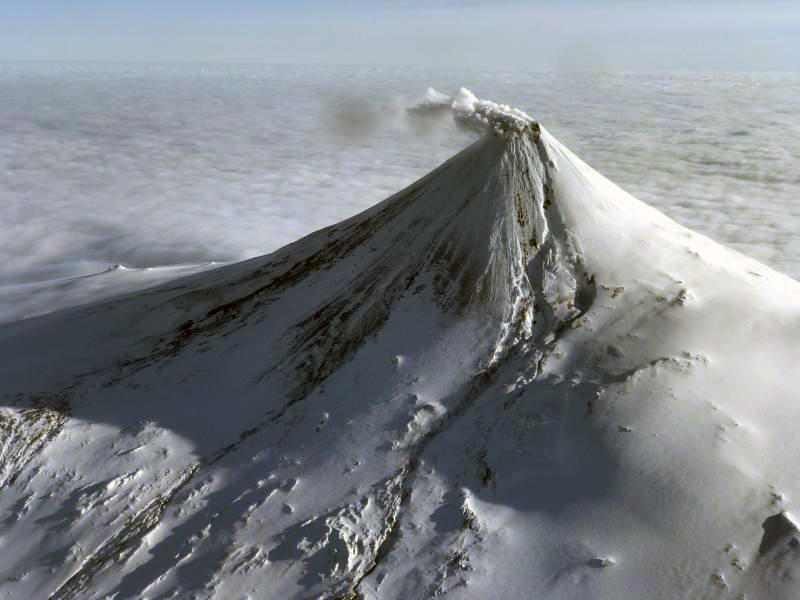 |
Figure 37. Photo of a gas-and-steam plume rising from the summit crater at Shishaldin on 22 February 2020. Photo courtesy of Ben David Jacob via AVO. |
On 14 March, lava and a possible new cone were visible in the summit crater using satellite imagery, accompanied by small explosion signals. Strong thermal signatures due to the lava were also seen in Sentinel-2 satellite data and continued strongly through the month (figure 39). The lava reported by AVO in the summit crater was also reflected in satellite-based MODIS thermal anomalies recorded by the MIROVA system (figure 40). Seismic and infrasound data identified small explosions signals within the summit crater during 14-19 March.
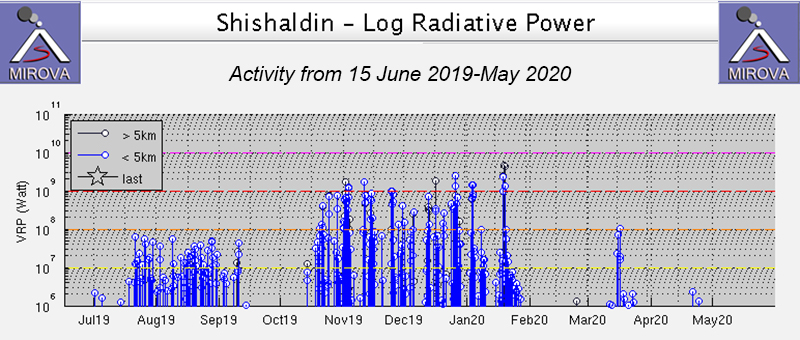 |
Figure 40. MIROVA thermal data showing a brief increase in thermal anomalies during late March 2020 and on two days in late April between periods of little to no activity. Courtesy of MIROVA. |
AVO released a Volcano Observatory Notice for Aviation (VONA) stating that seismicity had decreased by 16 April and that satellite data no longer showed lava or additional changes in the crater since the start of April. Sentinel-2 thermal satellite imagery continued to show a weak hotspot in the crater summit through May (figure 41), which was also detected by the MIROVA system on two days. A daily report on 6 May reported a visible ash deposit extending a short distance SE from the summit, which had likely been present since 29 April. AVO noted that the timing of the deposit corresponds to an increase in the summit crater diameter and depth, further supporting a possible small collapse. Small gas-and-steam emissions continued intermittently and were accompanied by weak tremors and occasional low-frequency earthquakes through May (figure 42). Minor amounts of sulfur dioxide were detected in the gas-and-steam emissions during 20 and 29 April, and 2, 16, and 28 May.
Geological Summary. The symmetrical glacier-covered Shishaldin in the Aleutian Islands is the westernmost of three large stratovolcanoes in the eastern half of Unimak Island. The Aleuts named the volcano Sisquk, meaning "mountain which points the way when I am lost." Constructed atop an older glacially dissected edifice, it is largely basaltic in composition. Remnants of an older edifice are exposed on the W and NE sides at 1,500-1,800 m elevation. There are over two dozen pyroclastic cones on its NW flank, which is covered by massive aa lava flows. Frequent explosive activity, primarily consisting of Strombolian ash eruptions from the small summit crater, but sometimes producing lava flows, has been recorded since the 18th century. A steam plume often rises from the summit crater.
Information Contacts: Alaska Volcano Observatory (AVO), a cooperative program of a) U.S. Geological Survey, 4200 University Drive, Anchorage, AK 99508-4667 USA (URL: https://avo.alaska.edu/), b) Geophysical Institute, University of Alaska, PO Box 757320, Fairbanks, AK 99775-7320, USA, and c) Alaska Division of Geological & Geophysical Surveys, 794 University Ave., Suite 200, Fairbanks, AK 99709, USA (URL: http://dggs.alaska.gov/); MIROVA (Middle InfraRed Observation of Volcanic Activity), a collaborative project between the Universities of Turin and Florence (Italy) supported by the Centre for Volcanic Risk of the Italian Civil Protection Department (URL: http://www.mirovaweb.it/); Sentinel Hub Playground (URL: https://www.sentinel-hub.com/explore/sentinel-playground).



